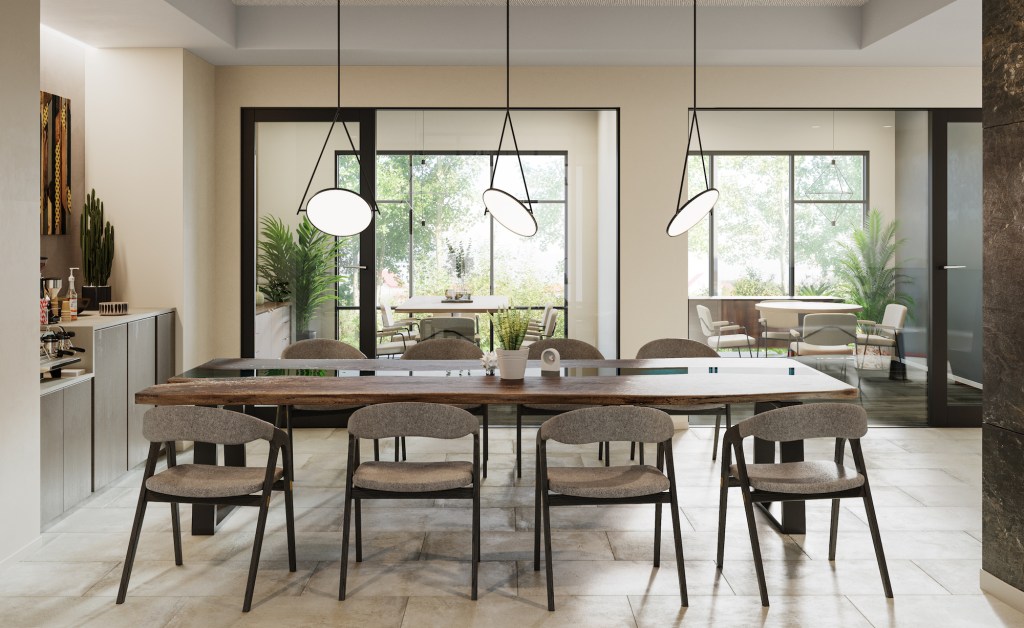Long after the pandemic is over, many renters still will be working from home.
Apartment developers are building places for them to work. That includes larger apartments with room for a home office and common areas with things residents can’t find in their homes, whether that’s a printer, a scanner, or privacy and a little silence.
These apartment firms paid attention during the pandemic to how their residents worked from home and what they say they will need in the future.
“We’ve spoken with many residents who say their employers are shifting to a mixed schedule of in-office work and telecommuting,” says Emelyna Aurich, director of property management for Cordish Living, working in the firm’s offices in Kansas City, Missouri. “Some are even making a full-time move to telecommuting.”
Small, Private Workspaces—For Rent
Several leading apartment companies offer residents the ability to reserve small, private workspaces, with some even charging a fee.
AvalonBay Communities, based in Arlington, Virginia, will soon offer private workspaces that residents can reserve and rent under its new “Second Space” brand, which converts underutilized retail space into private workspaces. Residents will pay AvalonBay for these private workspaces like they might pay for a storage locker or a parking space.
Throughout the pandemic, The NRP Group, based in Cleveland, also has offered a few private rooms that residents could reserve free of charge. “They are always full,” says Scott Villani, chief strategy officer and principal for NRP.
These small, private rooms may measure as little as 6 feet by 7 feet in size—just enough space for a chair and a desk where a telecommuter can complete a Zoom call in peace, without interruptions or background noise. NRP also is outfitting some of these tiny rooms with large, wall-mounted, flat-screen computer monitors that telecommuters can use with their laptops.
These small private office spaces are in addition to more conventional communal spaces, which often are arranged like a Starbucks coffee shop, complete with coffee machines provided by the property managers and tables and couches where residents can work alongside each other.
Today, developer NRP might build out 15% of the common area space at a new luxury apartment community with small, private workrooms, with as many as six to eight of these little rooms at a typical 300-unit development, and just 5% of the space as communal workspaces. In contrast, before the pandemic, NRP often built out 15% of the common areas with communal workspaces, with just 5% for small, private work rooms—perhaps just two of these little rooms at a 300-unit community.
Residents Also Work From Home in Their Homes
Residents also are paying more for larger apartments with extra room to create their own workspaces.
“You will see more future layouts geared to working from home or larger units with dens,” says Karen Hollinger, senior vice president of strategic initiatives for AvalonBay Communities. AvalonBay also is building out apartments with direct ethernet connectivity, ample electrical outlets, and focused task lighting.
“We are now adding additional services for those that plan to use their home as their primary work location including high-speed Wi-Fi, up to 1 gigabyte,” says Hollinger.
Large apartments are usually less expensive to build and less expensive to rent per square foot than small apartments, because less of their square footage is taken up by expensive bathroom and kitchen space. But at NRP’s properties, a one-bedroom apartment with a den and a total of 900 square feet of space now earns the same high price per square foot as a one-bedroom without a den and just 700 square feet of space. Residents prefer to furnish these workspaces with their own desks so NRP is not creating built-in furniture.
Developers are already building larger apartments, according to an analysis by Yardi Matrix of apartments now under construction in 92 cities. In about a third (36%) of those cities, the average apartment under construction is now 48 square feet larger than the average over the last five years.
“That’s just enough for a small home office, a bathroom, or some other type of living space that can provide a lifestyle upgrade for renters spending more time at home,” according to Yardi.

